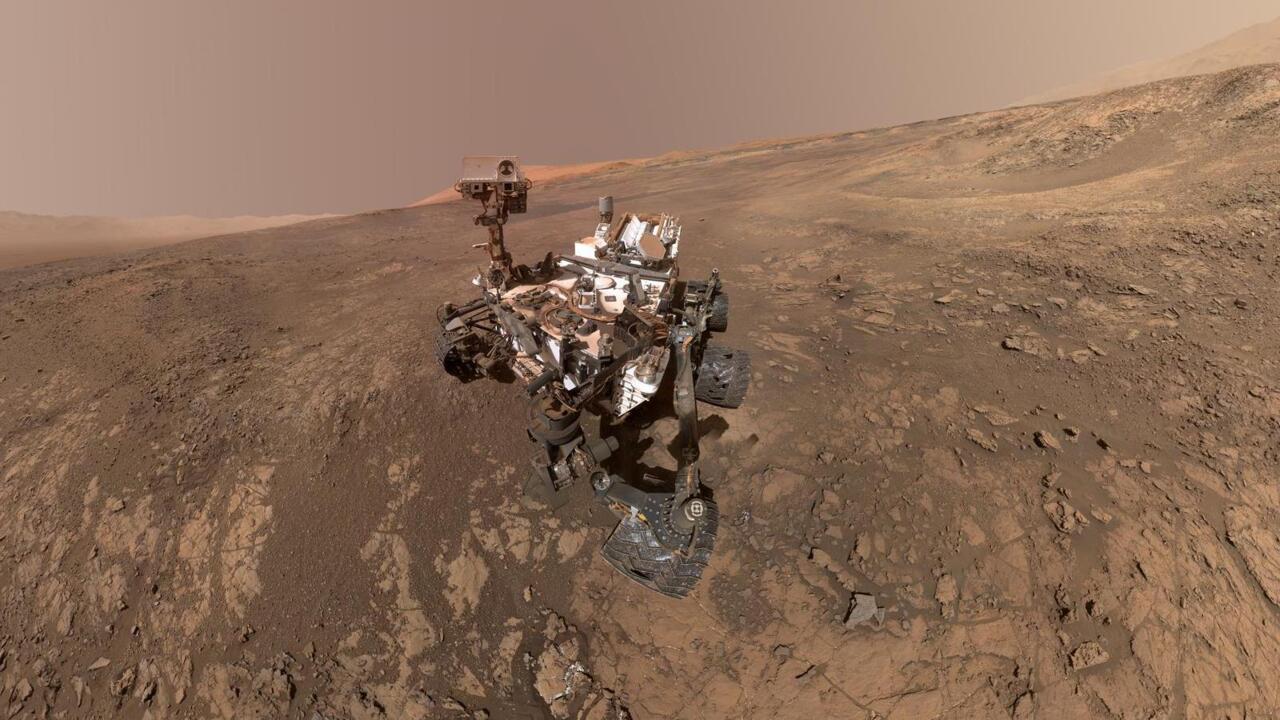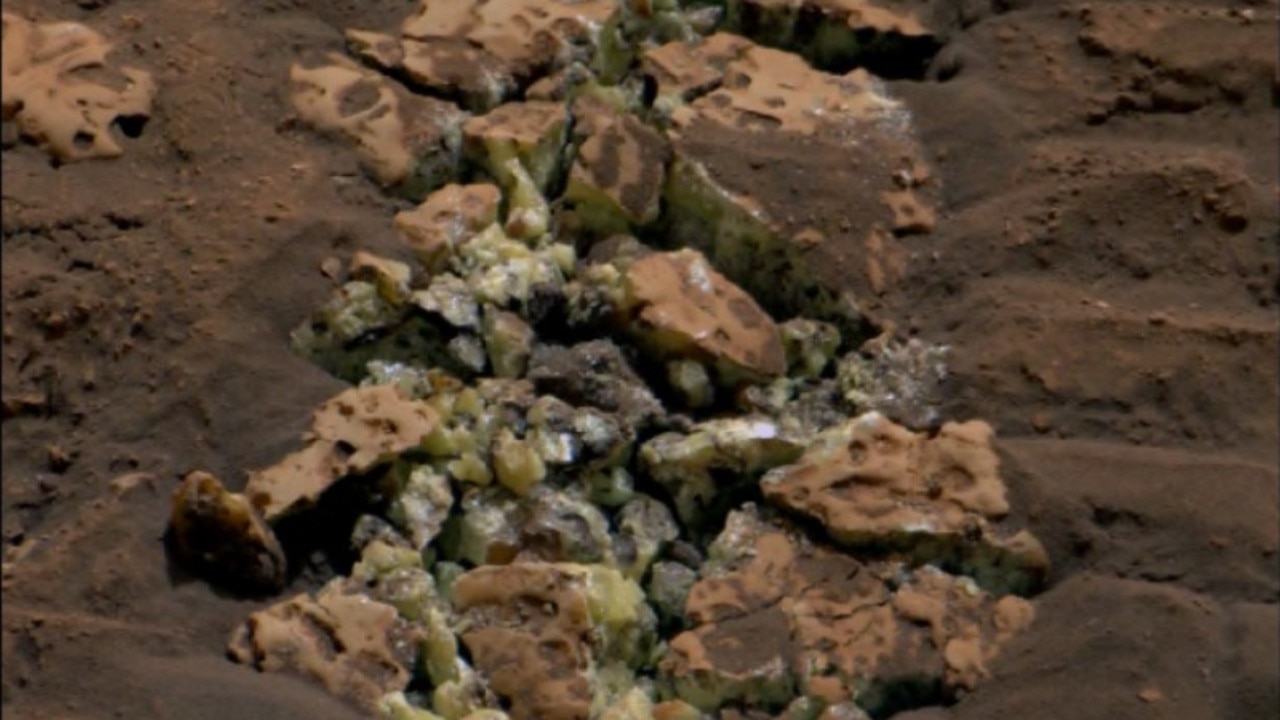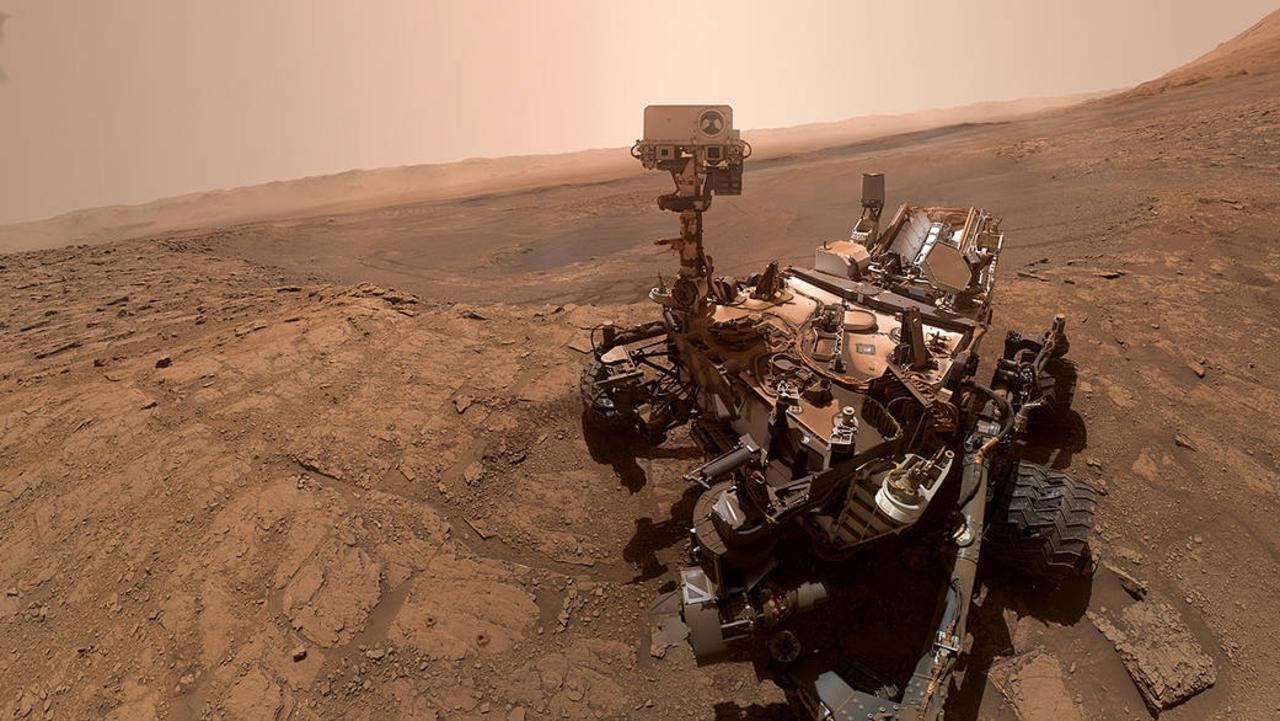NASA’s Curiosity rover makes ‘mind-blowing’ discovery on Mars after accident
NASA’s Curiosity rover has made an unexpected discovery about Earth’s mysterious red neighbour and scientists say it’s the strangest find yet.

Someone alert Elon Musk.
NASA’s Curiosity rover made a “mind-blowing” discovery on Mars – yellowish-green crystals of pure sulfur, never before seen on Earth’s mysterious red neighbour, according to scientists.
The literal groundbreaking find was made after the one-tonne Curiosity drove over a pile of rocks and cracked one open while probing the deep and winding Gediz Vallis channel, believed to have been formed by water three billion years ago, the New York Post.
“I think it’s the strangest find of the whole mission and the most unexpected,” Ashwin Vasavada, Curiosity project scientist at NASA’s Jet Propulsion Laboratory [JPL] in Pasadena, California, told CNN.
“I have to say, there’s a lot of luck involved here. Not every rock has something interesting inside.”
The rover’s operators spotted white stones in the distance and mission scientists wanted to investigate further. On May 30, Vasavada and his team reviewed images from the rover that showed a crushed rock in the wheel’s tracks.

What they saw when they zoomed in was “mind-blowing,” he said, as they viewed the “gorgeous texture and colour inside” of what had initially appeared to be a typical Martian rock.
They were even more shocked when analysis proved it was completely sulfur.
“No one had pure sulfur on their bingo card,” Vasavada said.
Sulfur rocks are usually “beautiful, translucent and crystalline,” according to Vasadava – but the millions of years of weathering sandblasted the rocks’ exterior, blending them with the rest of the orange Martian landscape.

Curiosity had previously discovered a number of sulfates, or salts that contain sulfur that are formed when water evaporates. Pure sulfur only forms on Earth under extreme conditions, such as volcanic processes or in hot springs, CNN reported.

The Gediz Vallis channel is dug out on the sides of the 5km-tall Mount Sharp, which the rover has been steadily climbing for 10 years.
This story originally appeared on the New York Post and was republished with permission.





